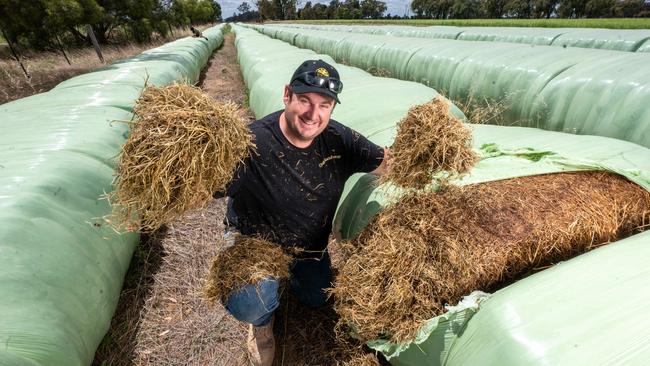Picture-perfect hay in Goulburn Valley
Farmers across northern Victoria are on the rebound after recent washouts and the 2022 floods.

Fodder crops look picture-perfect across the Goulburn Valley as farmers rebound from recent washouts.
The devastating flooding of October 2022, which all but wiped out much of the fodder supplies, is still etched in the memory of many farmers.
They are now focusing on filling up storage and trying to catch up from the loss.
Koyuga fodder producer Tom Galloway said it was good to see supply improve after the flooding.
Mr Galloway said this was his second year growing Teff grass to produce high-quality fodder.
He also grows clover, annual ryegrass, and lucerne.
“We are 90 per cent flood-irrigated,” he said.

Mr Galloway has made a mix of hay and silage and has used silage tubes to help with storage.
He said good rainfall through 2023 helped boost yields, and now was a good time to boost fodder supplies.
“I think now is going to be a real test for fodder with autumn coming on and people looking to secure supplies,” he said.
Data from the latest hay report by the Australian Fodder Industry Association shows demand settling across major growing regions.
Better cattle prices have helped to increase optimism in the hay trade, and there has also been interest in the export market.
In the Goulburn and Murray Valley, cereal hay is returning $270 to $335/tonne, and pasture hay remains firm at $260 to $320/tonne.
Straw is making $90 to $100/tonne.




